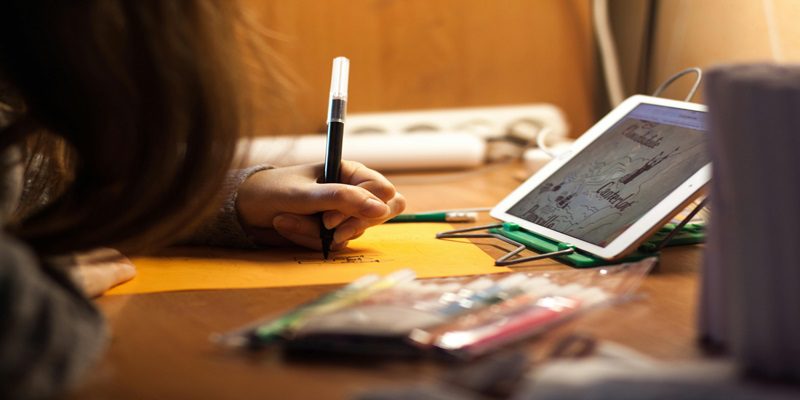Installing Balcony Solar Panel Kit: What Homeowners Need To Know

Installing balcony solar panel kit has many benefits for the home such as saving electricity, no need for constant maintenance, etc. A balcony solar panel kit is also a promising way to increase the value of your flat when renting it out. Currently, many online shops are offering connector systems at low prices, which makes the investment even more worthwhile. Installing these plug-in solar systems doesn’t even require the help of a skilled tradesman or electrician, but there are still some considerations you need to be aware of if you want to do it yourself. Sungold has the answers to these questions for you.
Who can install a balcony solar panel kit?
Plug-in solar systems are designed in such a way that they do not require a professional to install them – you can and are allowed to install a balcony power plant on your own. If you still wish to employ a tradesman for assembly, it is advisable to seek out a metal worker. Anyone doing the assembly themselves should follow the manufacturer’s instructions to the letter and consider the operating instructions. It is more secure to ensure that the kit contains the connection plug cable and the solar module connection cable.
Advantages and disadvantages of installing balcony solar panel kit
Advantages
- Renewable energy: utilises solar energy, environmentally sustainable.
- Energy efficient: reduces electricity bills.
- Long-term durability: solar panels usually have a long lifespan of up to 25 years.
- Easy to install: can usually be self-installed or simply installed.
- Reduced Carbon Footprint: Reduces negative impact on the environment.
- Microinverters: Increase system efficiency and simplify troubleshooting.
- Versatile solar panels: lightweight, rigid, coloured and many other options.
- Renewable Energy Revenue: generates savings on electricity bills and possible sales of surplus electricity.
Disadvantages
- High initial investment: Installation requires a large capital outlay.
- Space constraints: balconies may be limited in size, limiting the number of panels.
- Weather dependence: weather conditions affect energy production, with reduced capacity on cloudy days or at night.
- Building regulations: There are building codes or restrictions on the installation of equipment.
- Shadow issues: Shading from surrounding buildings or objects may affect energy output.
- Potential Payback Time: It will take some time to recoup the initial investment.
- Maintenance requirements: Solar panels may require regular maintenance.
- Technology changes: Technology may be outdated, affecting system performance.
Where should I choose to install balcony solar panel kit?
Typically, balcony solar panels are installed primarily on balconies, but can also be installed on garage roofs, garden sheds, yard fences, lawns, or house facades. To ensure optimal performance of your mini-PV system, there are several things to keep in mind when installing it, as the better it is installed, the more power it will generate.
Orientation
The sun’s rays should hit the panels as vertically as possible, so the best orientation is south, southeast, or southwest. There are several options when installing on a rooftop, but on a balcony or terrace, where structural constraints make it critical to find the place that receives the most sunlight, it is not advisable to install the system on the inside of a balcony niche or balustrade.
Electricity considerations
Are there activities that require more power in the morning, such as drinking coffee or using the bathroom light? If so, at least one module should face southeast. Work from home all day? South orientation may be more appropriate. Or do you need power in the evening, such as for laundry or watching TV? Southwest orientation may be good. Since solar panels do not store energy, consider matching the orientation of the modules to the time of day when power is needed.
Shadows
Do surrounding trees or houses cast shadows? For balcony solar panels, this can have a serious impact on the efficiency of power generation, as even partial shading may stop solar power generation.
Power connections
Proximity or proximity to an external socket is an important factor in connecting a balcony solar panel kit. More sensitive electrical equipment such as inverters and power connections need to be protected from rain and storms.
Proximity or proximity to an external socket is an important factor in connecting a balcony solar panel kit. More sensitive electrical equipment such as inverters and power connections need to be protected from rain and storms.
Installing balcony solar panel kit is permitted in Germany, provided that they comply with the VDE standard for “plug-in photovoltaic systems”. Maximum power 600 watts (W): Balcony solar panel kits can provide up to 600 W of power to the socket. Note: Balcony solar panel kits with inverters providing up to 800 W of feed-in power may be available in shops offering products for other EU countries. Connection: According to the VDE standard, a connection via a so-called Wieland power socket is specified, but in practice, this must be installed by a qualified electrician. However, the connection of balcony solar panel kits using conventional Schuko plugs is not yet prohibited, the federal government and the VDE are planning to legalize this connection and it is already widely used. More specific information about the legal requirements for balcony solar panel kits can also be found in a recent Sungold article.
How do I install plug-in balcony solar panels?
There are different mounting options depending on where you wish to mount your balcony solar panels.
Balcony: there are two ways to install directly on the balcony. One is to mount the panels on the outside of the balcony frame, and the other is to install the racking first and then fix the mini PV system to the racking.
Often, the latter is simpler. In stormy weather, additional ground anchoring protects the device. In addition, the mounting height of the balcony is critical. The higher the system is suspended, the more serious the damage that could result if the structural elements become loose. Therefore, for example, lightweight balcony components are recommended for balconies with a height of four meters or more.
Terrace: Similar to installation on a balcony. Here the racking is installed and then the mini solar system is placed. To ensure a secure connection, strong anchoring to the ground is important.
Rooftop: Installation of balcony solar panels on a sloping roof can be done using the same components as for a conventional solar system. For flat roofs, use the same aluminum brackets as for installation on a terrace.
Before fixing the solar panels to the racking, it is vital to install the inverter. Make sure the inverter is protected from rain and storms. Next, connect the mini-PV system to a Schuko outlet. The electricity generated can be used for home use, while excess power can be fed into the grid without any compensation.
Rooftop: Installation of balcony solar panels on a sloping roof can be done using the same components as for a conventional solar system. For flat roofs, use the same aluminum brackets as for installation on a terrace.
Before fixing the solar panels to the racking, it is vital to install the inverter. Make sure the inverter is protected from rain and storms. Next, connect the mini-PV system to a Schuko outlet. The electricity generated can be used for home use, while excess power can be fed into the grid without any compensation.





